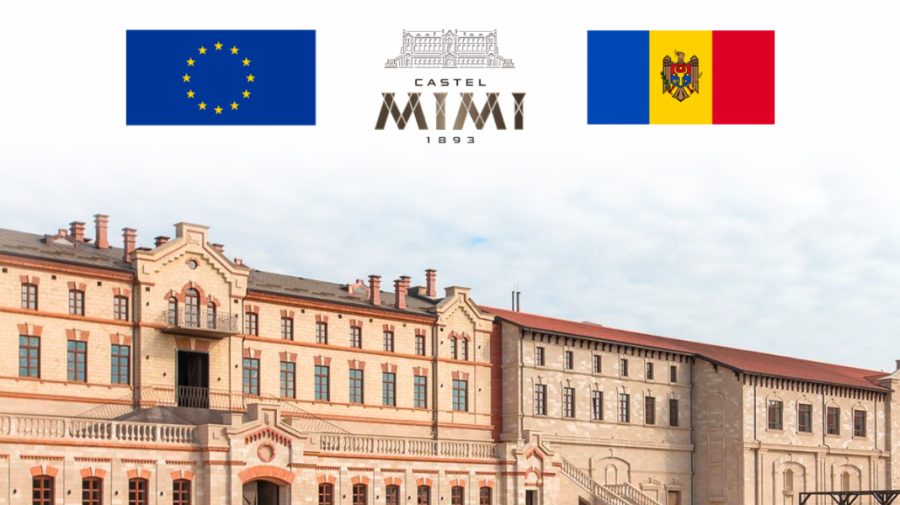Adrian Trofim, CEO of Castel Mimi, says, “We are proud, as a location, to host the Summit of the European Political Community, and we believe that Castel Mimi can best exemplify the necessity and efficiency of partnerships between the people of the Republic of Moldova and the community of European states, offering unique examples from its 130-year history!”
Castel Mimi is a captivating “history lesson,” with its wines telling the legendary story of the nation. From seven thousand years ago to Constantin Mimi, the man who brought the most advanced European technologies in construction, winemaking, and moral values to Moldova through supported social enterprises and cultural projects. He was a young graduate of the Higher School of Agronomy in Montpellier, France, who at the age of only 25 returned from Bordeaux, where he built the first authentic French chateau. Mimi introduced the most advanced construction technologies, such as using of reinforced concrete, for the first time in Bessarabia.
Constantin Mimi was also the first winemaker who brought European grape varieties to Bessarabia, thus offering the local wine a recognized quality within a radius of thousands of kilometers. The first grapevine was planted in Bulboaca in 1890 and can still be admired today, being the oldest grapevine in Moldova.
In 1998, another young member of the Trofim family started the revival of the winery in Bulboaca, which was severely bankrupt and on the verge of liquidation, along with a significant part of the industry at that time. Rediscovered accidentally during repair works, the Castle transformed from an industrial building into the most monumental tourist complex in the Republic of Moldova in just six years.
This journey was guided by the renowned Italian architect Arnaldo Tranti, who also restored the famous winery Chateau de Ferrand in Bordeaux, included in the UNESCO World Heritage List.
When it comes to the renowned wines of Castel Mimi, the foundations were laid 130 years ago through the application of the most modern European technologies. Advanced machinery from France, Italy, and Switzerland is used for fermenting the grape must. The noble wines are matured in the oldest location at Castel Mimi—the cellars with a constant temperature of 12 degrees Celsius, ensured by the castle walls, which are over one and a half meters thick. Currently, these cellars have a maximum capacity of 3,000 barrels, of which 1,000 are predominantly made of French oak imported from a region near Bordeaux. The maturation period ranges from 6 months to 24 months, and the wine remains excellent even after 20 years of bottling.
At present, Castel Mimi produces over 60 types of wine products, whose popularity is growing in the international market, with exports to around 20 countries, including over 70% to European countries, China, and Japan.
 FOR THE MOST IMPORTANT NEWS, SUBSCRIBE TO OUR TELEGRAM CHANNEL!
FOR THE MOST IMPORTANT NEWS, SUBSCRIBE TO OUR TELEGRAM CHANNEL!
Adrian Trofim, CEO of Castel Mimi, states, “In a world where climate change and environmental degradation are becoming increasingly acute, investments in green energy are no longer a moral obligation but a vital necessity. This is the future we envision at Castel Mimi, and we are creating it today. We are at the beginning of the journey, but we can already say that we are an example of sustainability, especially for the wine industry in the region.”
The share of renewable energy used in Castel Mimi’s operations will increase to 75% of daily needs in the coming months, and this will happen only six months after the installation of the first phase of the photovoltaic park. The long-term sustainability strategy, approved by Castel Mimi in 2018, involves a transition to the complete consumption of energy by 2027.
Another important step in this regard is the control of CO2 emissions. Castel Mimi’s actions to reduce its carbon footprint, such as replacing all traditional bulbs with LED lamps, have resulted in a reduction of 760 tons of CO2 emissions per year.
Additionally, to achieve a higher level of energy efficiency, geothermal pumps will be installed this year, and the capacity of organic waste storage vessels will be expanded for compost production.
This compost is used as fertilizer for the organic vegetables cultivated in the gardens of Castel Mimi.
On June 1, 2023, over two thousand guests of Castel Mimi from the European Union will have the opportunity to admire the winery, which is among the top 15 wineries in the world. It has been included in the Wine Travel Award list as the “business card of Moldova,” and The Telegraph has named it the “Versailles of Moldova.” It is a museum of traditions visited annually by approximately 200,000 tourists from 80 countries, and over a hundred cultural events, international forum meetings, and various recreational activities have been organized on its premises.




 FOR THE MOST IMPORTANT NEWS, SUBSCRIBE TO OUR
FOR THE MOST IMPORTANT NEWS, SUBSCRIBE TO OUR